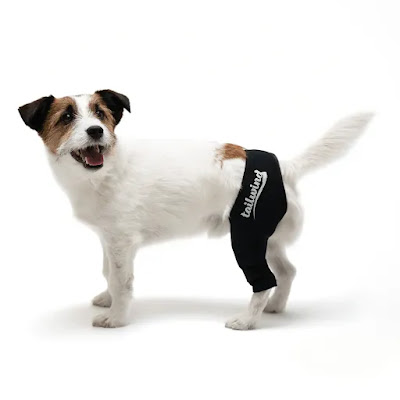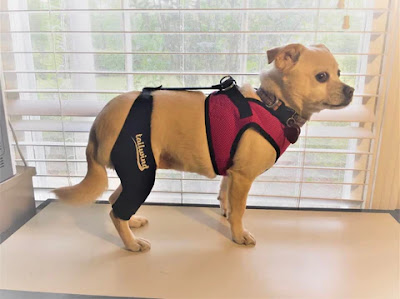Luxating
patella, a condition where a dog's kneecap dislocates from its normal position,
can be a painful and limiting ailment. Fortunately, there are several options
to address this issue, and dog knee braces stand out as an effective and non-invasive solution.
Custom-Made Dog
Knee Braces:
When
dealing with luxating patella, one size does not fit all. Dog custom knee braces offer a precise fit tailored to the dog's unique anatomy,
ensuring optimal support and comfort. These braces are designed after careful
measurements and consultation with a veterinarian or a canine orthopedic
specialist. While they might be pricier than off-the-shelf options, custom-made braces provide the most
accurate and effective solution for luxating patella.
Off-the-Shelf
Dog Knee Braces:
These
are readily available in various sizes and designs. While they may not offer
the tailored fit of custom-made braces, they can still provide substantial
support for dogs with luxating patella. Off-the-shelf braces are more
affordable and offer a convenient option for pet owners looking to alleviate
their dog's discomfort.
Hinged Knee
Braces:
Luxating
patella often involves instability in the knee joint. Hinged dog knee braces are designed to address this issue by providing
stability and support while allowing for controlled movement. These braces are
particularly beneficial for dogs with both luxating patella and ligament
injuries, offering comprehensive support.
Compression
Sleeves:
While
not traditional knee braces, compression sleeves can be a valuable addition to
a dog's treatment plan for luxating patella. They offer gentle compression to
the knee joint, helping reduce inflammation and providing mild support.
Compression sleeves are lightweight and comfortable, making them suitable for
dogs with milder cases of luxating patella.
Rigid Support
Braces:
In
some instances, a dog may require a more rigid form of support to manage
luxating patella. Rigid support braces are designed to limit excessive movement
in the knee joint, offering stability and minimizing the risk of dislocation.
These braces are typically recommended for dogs with severe cases or
post-surgery recovery.
Consulting a
Veterinarian:
The
selection of the most suitable dog knee brace
for luxating patella should always involve consultation with a veterinarian or
an orthopedic specialist. They can assess the severity of the condition and
provide guidance on the most appropriate brace type, as well as recommendations
for the correct fit and usage.
In conclusion
Dog knee braces offer a range of options to address luxating patella, catering to the specific needs and preferences of both dogs and their caregivers. Whether custom-made, off-the-shelf, hinged, compression, or rigid support braces, these devices can significantly improve a dog's comfort, stability, and overall quality of life when coping with this condition.









